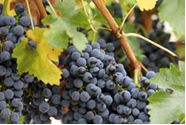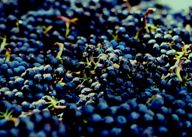Red Grapes
Purple Grapes

Geographic Origin and Regions Grown
The vines of red grapes and the other hues cover 75,866 square-kilometers in the entire world. The allotted space for vineyards is growing around 2% every year. Around 71% of the production of grapes is used to make wine, while 27% is produced for fresh fruit, and the last 2% is used as dried fruit.
A part of production is used to create grape juice associated with products that don’t add sugar or preservatives or are 100% natural. Currently, the biggest contributors in wine-making business are: Spain, France, Italy, Turkey, United States, Iran, Romania, Portugal, Argentina, and Australia.
A highly-desirable quality in grape selection is seedlessness. This factor is so important that the producers of seedless grapes make up the majority of the grape-planting market. The trait of seedlessness stems from several sources, but primarily comes from three sources: the Black Monukka, the Russian Seedless, and the Thompson Seedless. Seedless varieties are more popular because of the ease at which they can be consumed, but the fruit loses its potential health benefits that are provided by the enriched phytochemical content of grape seeds.
History of Consumption
The grape seems to have been pleasurably eaten from the beginning of time. It grows on the perennial and deciduous woody vines of the genus Vitis. Grapes have been eaten straight off the vine or used for making jams, jellies, juice, grape-seed oil, and most exclusively wine.
Grapes grow in clusters of 6 to 300, and can be black, blue, golden, green, purple, red, pink, brown, peach, or white. White grapes are evolutionarily derived from the red grape. Mutations in two regulatory genes turn off production of anthocyanin, which is responsible for the color of red and the deeper colored purple grapes.

Common Consumption Today
Grapes can be eaten fresh or frozen, in yogurts and salads, as well as dried to make raisins or fermented to make wine. They can also be used to make jelly and pies. More recently, a beverage called grape lemonade has risen in popularity as being a great thirst quencher. In addition, fresh or frozen grape juice is currently used as a sweetener for fresh fruit cocktails.
Vitamins, Minerals and Phytochemical Components
Grapes contain vitamin C, fiber, and potassium. Red grapes in particular contain potent phytochemicals that provide the body with antioxidants. Resveratrol and ellagic acid can be found in the skin and seed of grapes. Both of these substances are antioxidants that according to the American Institute for Cancer Research, may prevent, reverse, and slow down genetic mutations that normally cause cancer. Ellagic acid appears to scavenge carcinogens in the body.
Medicinal Uses Based on Scientific Studies
Coming soon.
Red Grapes Nutrition TableReturn from Red Grapes to Common fruit list



